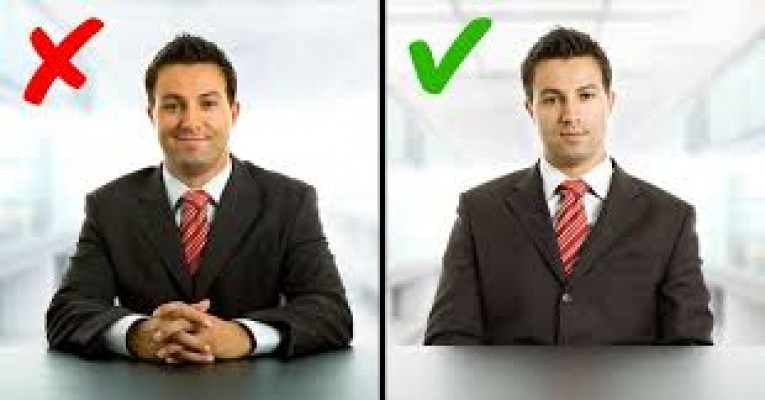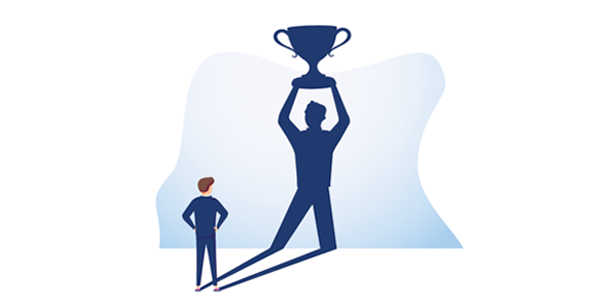Ways to Improve your Body Language at Work

posted:4 years agobyAwatef Hamdiin Work Life
If you are an employee or a trainee, you need to know that work is not only about exercising your knowledge and skills. It is also about how to behave and act in some situations. Like any professional, you need to mind your body language. After all, you are not a robot. You may be an exemplary employee, persistent, and entirely responsible for the tasks assigned to you. But, you may not quickly get the promotion you dream of. Do your actions hinder your professional and social progress in the Workplace? Let's find out the impact of your body language and how to improve it.
Do People Pay Attention to My Body Language?

Body language is a great way to communicate without talking. Although body movements and reactions might be voluntary and involuntary, everything you do with your body can be read by others. It has significance and meaning. That's why applicants need to watch their body language at a job interview. The same should be done at work and not only for a job interview. Body language is a non-verbal way of communication, relying solely on our bodies' movement to communicate specific information and ideas. Body language generally includes facial expressions, body postures, eye movement, even gestures, and movement of hands and legs. Everything you do with your body symbolizes something. So, it is essential to recognize and learn that language so that you can deal better. Here is How to Sell Yourself in an Interview
Types of Body Language that You Need at Work:
There are many forms and types of body language. Anything you do in your office or during a meeting can tell a lot about your professional personality and attitude. To know how to read body language, you have to get to know these types.
Facial Expressions
Everything is written on the face. Facial expressions can play an essential role in generating the first impression. In body language, anyone's face is the screen where you can understand this character. Smile expression, frown facial expression, and even happiness appear on facial features too. So how can you read each facial expression? There are two types of body expressions, short-term and long-term. Short-term expressions are those that appear immediately on a person's face. Long-term expressions can be detected through public speeches or a meeting where the employee or the individual is preserving the same facial expression for a long while. Take a look at the most stressful jobs in the UK.
Nods and Rejections:
Your neck can also be expressive. How can someone talking to you feel that you are following or understanding the topic? It is through the way you nod. You can also stretch your neck and bend towards someone to act like you are miss-listened or capture an essential sentence from a specific side. When you want to save time to express rejection, you can also shake your hand to say no! How to Do Effective Communication in the Workplace? Try 11 Simple Methods
Eye Gaze:
The way you look to people can be very expressive. Eyes can express surprise, happiness, joy, and even sadness. The way you project gaze towards a direction is noticed at work. Employers can feel it even in a job interview. The way you look to them can tell a lot about your personality. It is always recommended to look at your interviewer straight in the eye. This way shows confidence and more certainty. Looking at the wristwatch is the worst thing you can do with your eyes. Looking at the watch can be translated as impatience and considered inappropriate behavior.
Body Language Mistakes that You Need to Avoid:
Crossing Arms and Legs:
The way you sit in a meeting can tell a lot about your personality. Holding your arms, legs, or feet may make you feel comfortable. But it is not suitable in the Workplace. This malicious non-verbal behavior can give negative signals to others around you. For example, others may not interact with you because they think you are defensive, stubborn, or arrogant. What Is Disgruntled Employee And How To Handle Him
Bad Greeting:

You can know a lot about the person from shaking hands. This greeting type either emphasizes the strength of the person or indicates his weakness or indifference. A person with a firmer grip is often more powerful. Think carefully before you reach out to shake hands with the officials at your Workplace. Always in a bad mood? Here are some Jobs for People Who Hate People
The Way you Listen to Conversations
Meetings are often long and continue with different discussions or conversations; no matter how boring the conversation is, don't put your hand under your chin or cheek and get displaced in space.
Neuro gestures
When you are nervous, you have an attitude that shows your worries. Pop joints, play with hair, bite nails, and lip all fall under examples of neural gestures. Reviewing these neurological habits in front of your boss or colleagues may reduce your credibility and make others think you are anxious or incompetent. Reduce caffeine and cigarettes. Be wiser and take a deep breath if you feel stressed. Take 5 minutes to calm down before returning to the meeting. Here is the 10 Things You Should Never Say to your Boss
Putting your Hands in Pockets
Hiding your hands in pockets is a childish habit. Sometimes it means that you are misleading people. It can be a reaction to hide something. For example, you are using your mobile during work, and when suddenly your employer comes, you hide the phone in your pockets and keep your hands there. Or when you break a piece of office equipment, you directly hand your hands in your pockets and act like it is not you. It is a childish behavior to hide small crimes. You should better avoid it.
To sum up, employees' body language is taken into account and can tell a lot about the applicant's motivation for the job. Try to be friendly and show interest when someone asks for your help or recommendations. Finally, we recommend you to visit Fratres for more professional updates.
